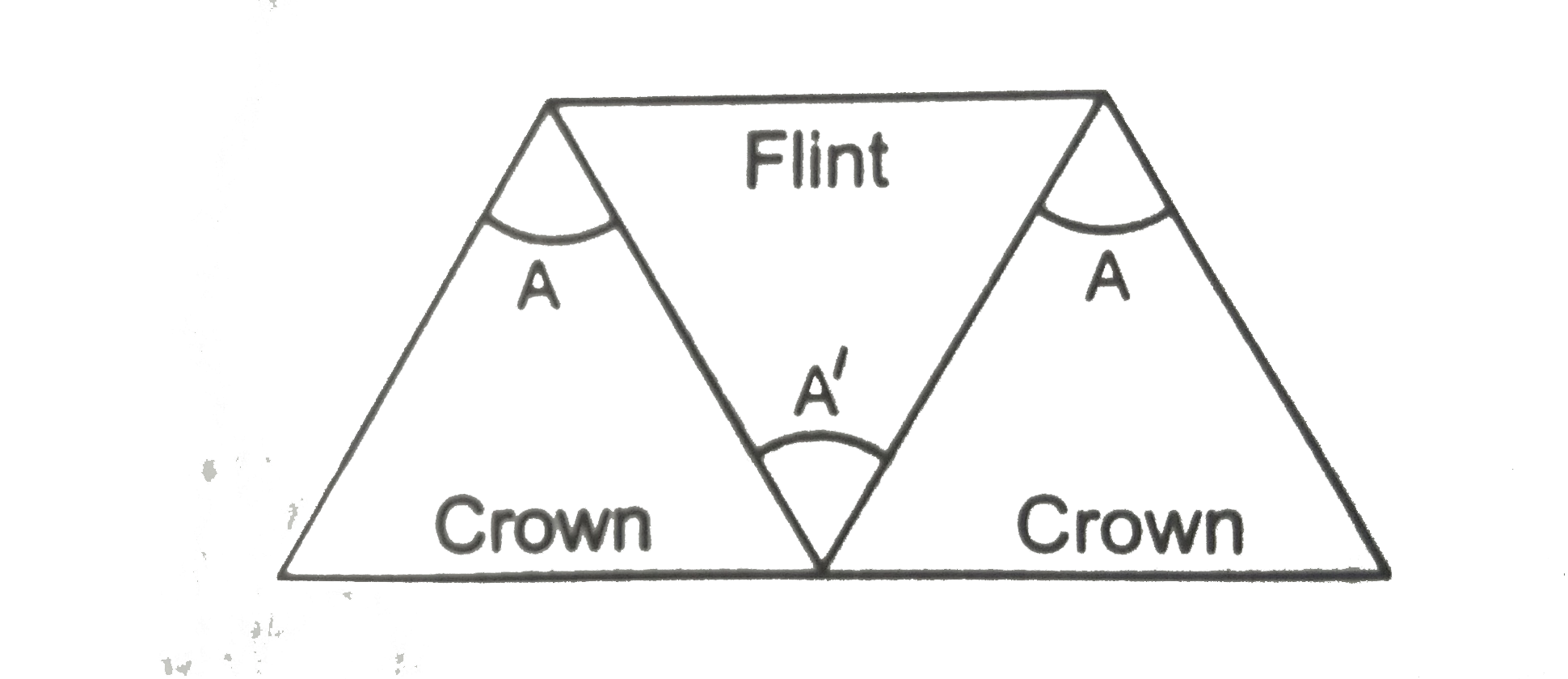Complete Solutions to Exercises of chapter DISPERSION AND SPECTRA of Class 12 book with complete answers and questions
| Class 12 | PHYSICS |
| Chapter | DISPERSION AND SPECTRA |
| HC VERMA | Exercises |
| Number Of Questions | 11 |
| Academic Year | 2023-24 |
A flint glass prism and a crown glass prism are to be combined in such a way that the deviation of the mean ray is zero. The refractive index of flint and crown glasses for the mean ray are 1.620 and 1.518 respectively. If the refracting angle of the flint prism is `6.0^@`, what would be the refracting angle of the crown prism ?
View SolutionA certain material has refractive indices 1.56, 1.60 and 1.68 for red, yellow and violet light respectively. (a) Calculate the dispersive power. (b) Find the angular dispersion produced by a thin prism of angle 6° made of this material.
View SolutionThe focal lengths of a convex lens for red, yellow and violet rays are 100 cm, 98 cm and 96 cm respectively. Find the dispersive power of the material of the lens.
View SolutionThe refractive index of a material changes by 0.014 as the colour of the light changes from red to violet. A rectangular slab of height 2.00 cm made of this material is placed on a newspaper. When viewed normally in yellow light, the letters appear 1.32 cm below the top surface of the slab. Calculate the dispersive power of the material.
View SolutionA thin prism is made of a material having refractive indices 1.61 and 1.65 for red and violet light. The dispersive power of the material is 0.07. It is found that a beam of yellow light passing through the prism suffers a minimum deviation of `4.0^@` in favourable conditions. Calculate the angle of the prism.
View SolutionThe minimum deviations suffered by red, yellow and violet beam passing through an equilateral transparent prism are `38.4^(@), 38.7^(@)` and `39.2^(@)` respectively. Calculate the dispersive power of the medium.
View SolutionTwo prisms of identical geometrical shape are combined with their refracting angles oppositely directed. The materials of the prisms have refractive indices 1.52 and 1.62 for violet light. A violet ray is deviated by `1.0^@` when passes symmetrically through this combination. What is the angle of the prisms ?
View SolutionThree thin prisms are combined as shown in figure. The refractive indices of the crown glass for red, yellow and violet rays are `mu_r, mu_y and mu_v` respectively and those for the flint glass are `mu_r^', mu_y^' and mu_v^'` respectively. Find the ratio A'/A for which (a) there is no net angular dispersion, and (b) there is no net deviation in the yellow ray.

View SolutionA thin prism of crown glass `(mu_r=1.515, mu_v=1.525) ` and a thin prism of flint glass `(mu_r=1.612, mu_v=1.632)` are placed in contact with each other. Their refracting angles are `5.0^@` each and are similarly directed. Calculate the angular dispersion produced by the combination.
View SolutionA thin prism of angle `6.0^@, omega'=0.07 and mu_y'=1.50` is combined with another thin prism having `omega = 0.08 and mu_y = 1.60`. The combination produces no deviation in the mean ray. (a) Find the angle of the second prism. (b) Find the net angular dispersion produced by the combination when a beam of white light passes through it. (c) If the prisms are similarly directed, what will be the deviation in the mean ray ? (d) Find the angular dispersion in the situation described in (c).
View SolutionThe refractive index of a material `M_1` changes by `0.014` and that of another material `M_2` changes by `0.024` as the colour of the light is changed from red to violet. Two thin prisms one made of `M_1 (A = 5.3^@)` and other made of `M_2(A = 3.7^@)` are combined with their refracting angles oppositely directed.
(a) Find the angular dispesion produced by the combination.
(b) the prisms are now combined with their refracting angles similarly directed. Find the angular dispersion produced by the combination.
View Solution
Exercises questions and complete solutions for chapter DISPERSION AND SPECTRA of HC VERMA PHYSICS (ENGLISH) of Class 12